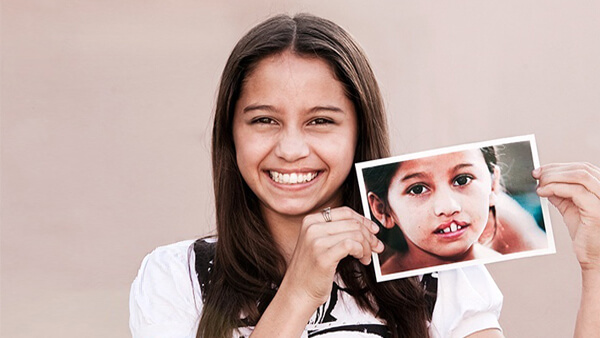Cleft lip and cleft palate happen in about 1 or 2 of every 1,000 babies, which is one of the most common birth defects. It is an opening in the lip or roof the mouth or both which cause many problems related to feeding, speech, dental, hearing etc. Both cleft lip and cleft palate are treatable with the help of surgery in the first year or two of life.
How a Cleft Lip or Palate Forms?
Cleft lip or palate development start during the first 6-10 weeks of pregnancy. When a baby is growing in the womb, the bones and tissues of upper jaw, nose, and mouth come together to form the roof of the mouth and the upper lip normally, but if not fused cleft happens.
Cleft lip looks like an opening at the edge of lip extends to the nose, also into the gums in some cases. It varies the different size and affects the soft palate near the throat, sometimes it extends to hard palate making an opening toward the front of the mouth.
A cleft can be either on one side or the both sides of the mouth.
There are different types of cleft occurs-
- Cleft lip most common in boys
- Cleft lip most common in boys
- Cleft palate most common in girls
- Cleft lip and cleft palate together more common in boys
Related Health Problems
Cleft lip and palate can influence many actions of the mouth and face. Some of the problems related to the condition are:
- Feeding Problems:
Babies with cleft palate face the problem when feeding. Normally healthy palate help baby to drink milk without entering into the nose, but in the case of having a cleft, it is very difficult.
- Loss Of Hearing:
As the cleft palate connects mouth to the nose, there is a risk of fluid buildup in the middle ear. This creates an infection and hearing problem.
- Dental Problems:
Children with a cleft lip and palate have underdeveloped ridge or defects in gums result in no teething or small teeth or having extra teeth out of position. Also, ridge defects rotate permanent teeth or prevent them erupt correctly.
Regular dental visit help in the evolution of your kid's mouth growth and development, recognize any problems and make treatments when needed.
- Speech Problems:
Children with cleft palate have more speech problem than cleft lip which occurs most often in about 1 in 5 kids. They sound like they speaking through their nose due to palate doesn't move to prevent air from leaking out of the nose.
Treatment
- Surgical Treatment:
When a child is A cleft lip is 3 to 6 months old, cleft lip can be treated surgically in the dental hospital using general anesthesia. If the cleft lip is wide it is treated by some procedures like lip adhesion, molding plate device help in lip closure. Cleft lip surgery usually leaves a small scar under the nose to lip.
At an age of 9-12 months, plastic surgeon repair cleft by using muscles from the soft palate and after recovery child can speak correctly.
As kids grow, more surgeries may require such as pharyngoplasty for improving speech, bone grafts to provide stability for permanent teeth.
- Dental and Orthodontic Treatment:
It is very important for the kids with cleft lip and palate to maintain healthy teeth without cavities because they are more prone to dental problems than other kids.
They also need an orthodontic treatment as early as 6 years of age. It includes palatal expansion, followed by braces treatment to position the teeth.
Some kids with missing a permanent tooth can be replaced with a removable appliance or, in early adulthood, a dental implant.

